Unit 2: Lecture 12: Neurophysiology Pt.3
1/17
There's no tags or description
Looks like no tags are added yet.
Name | Mastery | Learn | Test | Matching | Spaced |
|---|
No study sessions yet.
18 Terms
Action Potential
An electrical signal generated by neurons
occurs along the length of the axon
the ion channels that produce action potentials are mainly voltage-gated channels
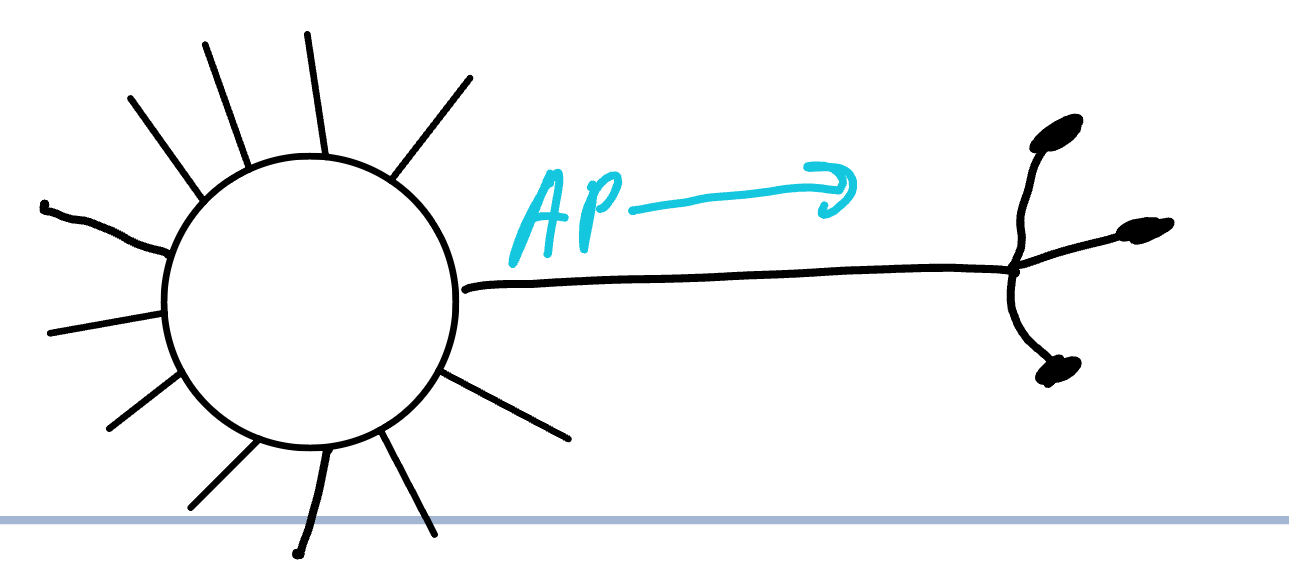
Step 1 of Action Potential
cell starts at -70 mv= RMP
local potential at axon hillock increases until it rises to threshold=-60 mv
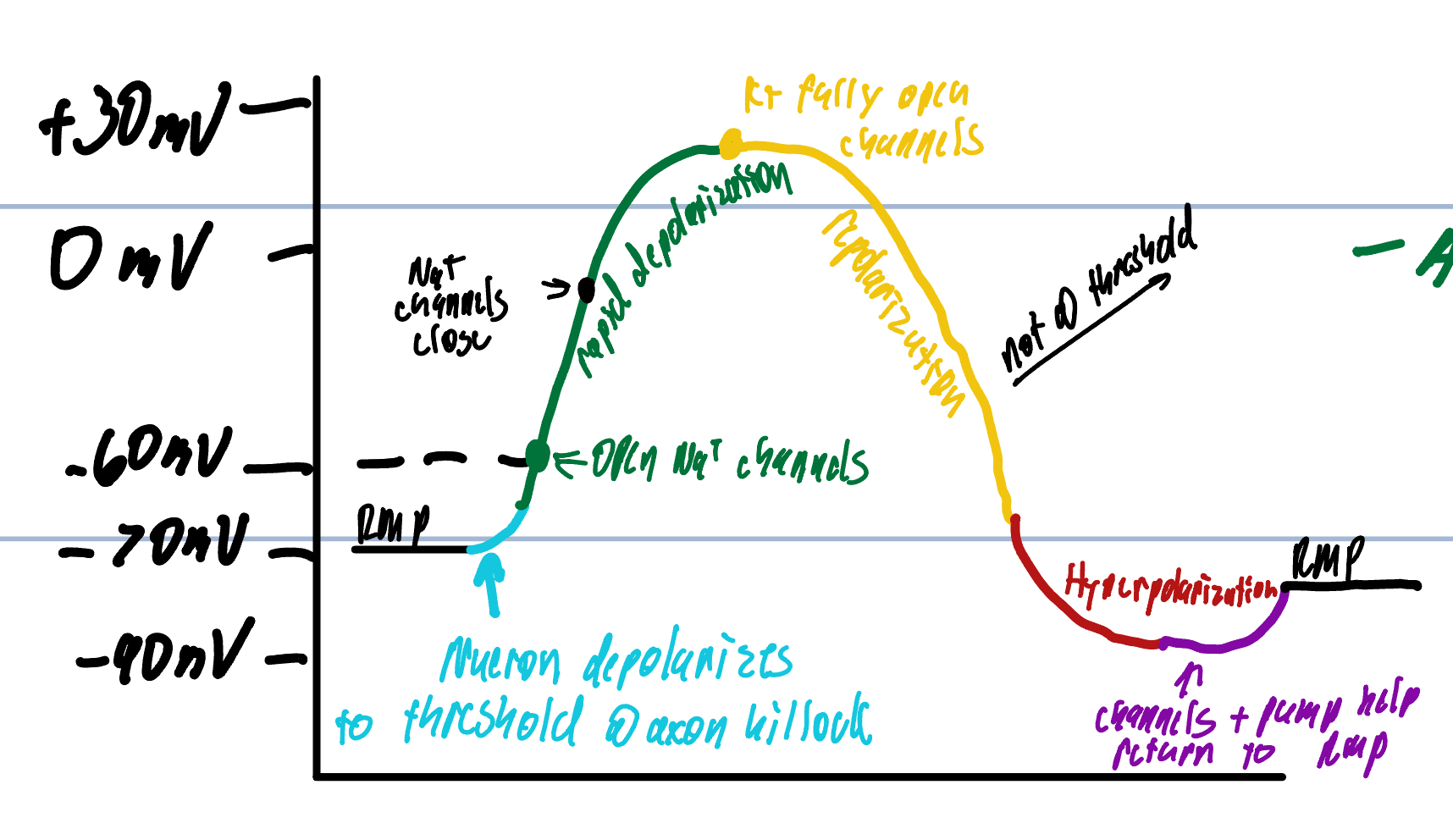
Step 2 of Action Potential
Neurons produce AP
voltage-gated Na+ channels open more and more
More Na+ enters the cell
K+ channels open very slowly when threshold is reached
rapid depolarization
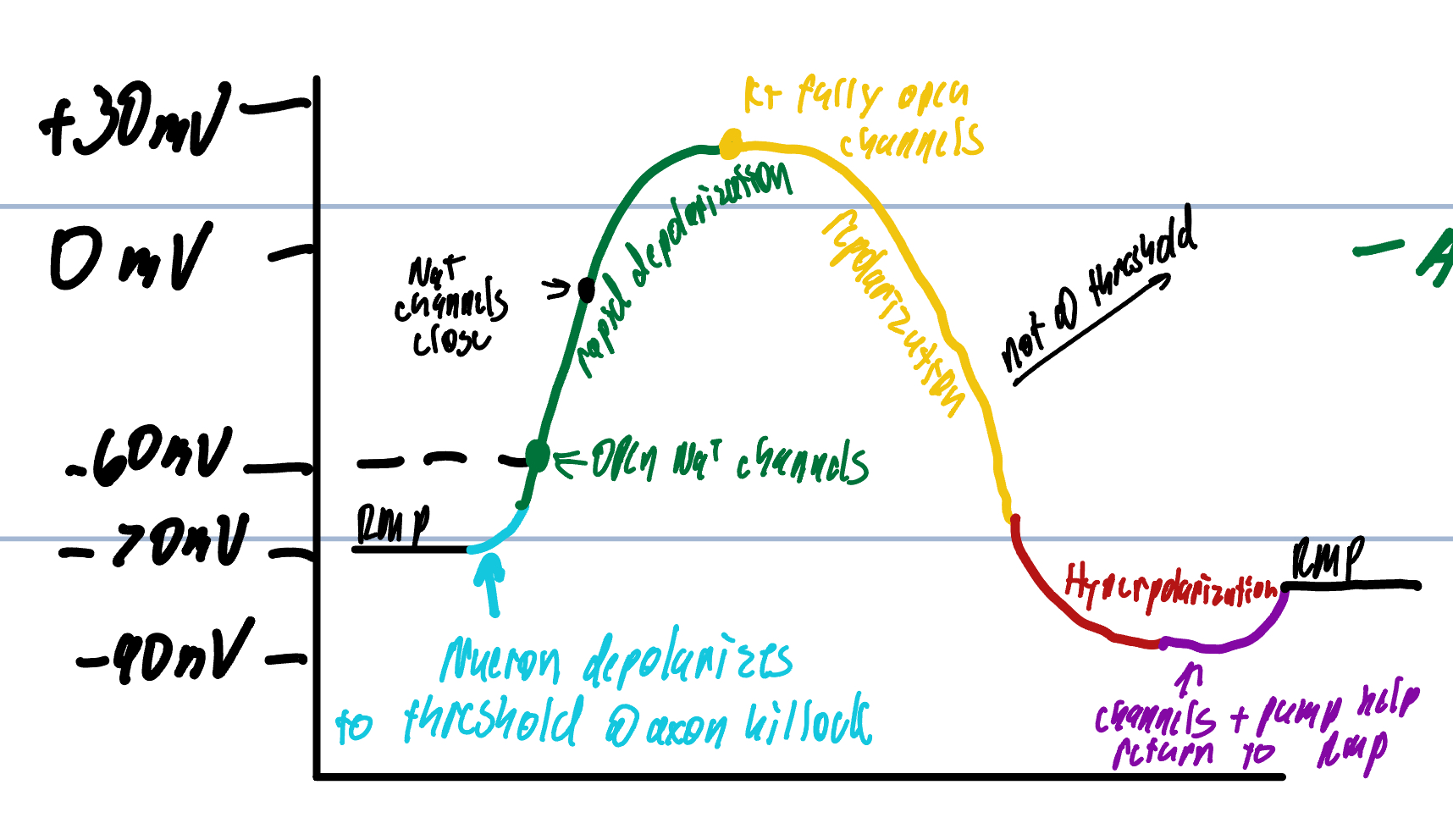
Step 3 of Action Potential
Rush of Na+ ions enter to depolarize
Voltage peaks at approx +35 mv
K+ voltage gated channels are becoming fully opened

Step 4 of Action Potential
K+ leaves the cell repolarizing the membrane
causes a shift back to negative inside and positive on the outside of the cell
K+ channels remain open a little longer than the Na+ channels
More K+ ions leave the cell than Na+ ions causing hyperpolarization
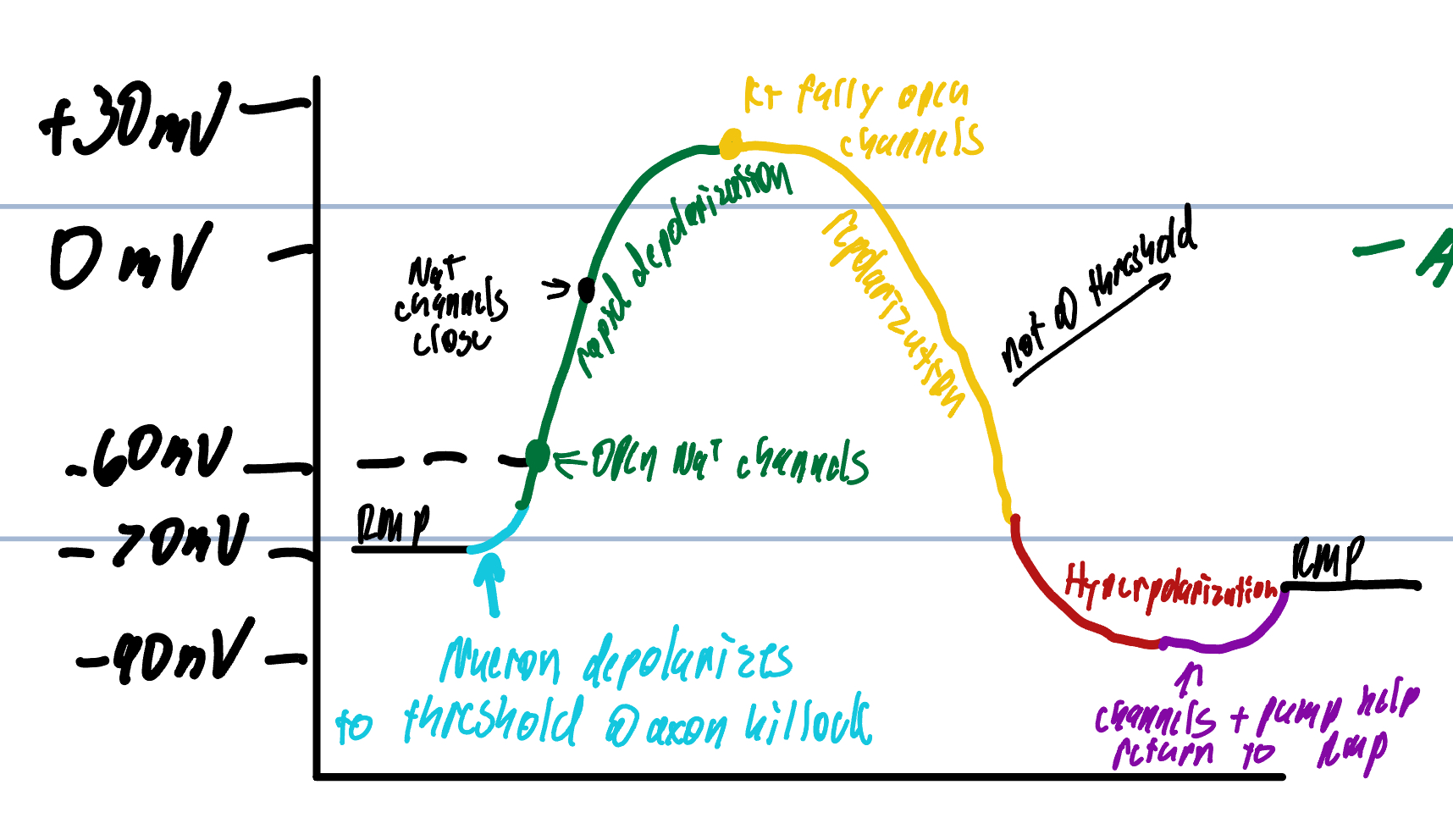
Step 5 of Action Potential
Na+/K+ ATPase pump helps to restore cell to RMP
removes excess Na+
Gain the loss of K+
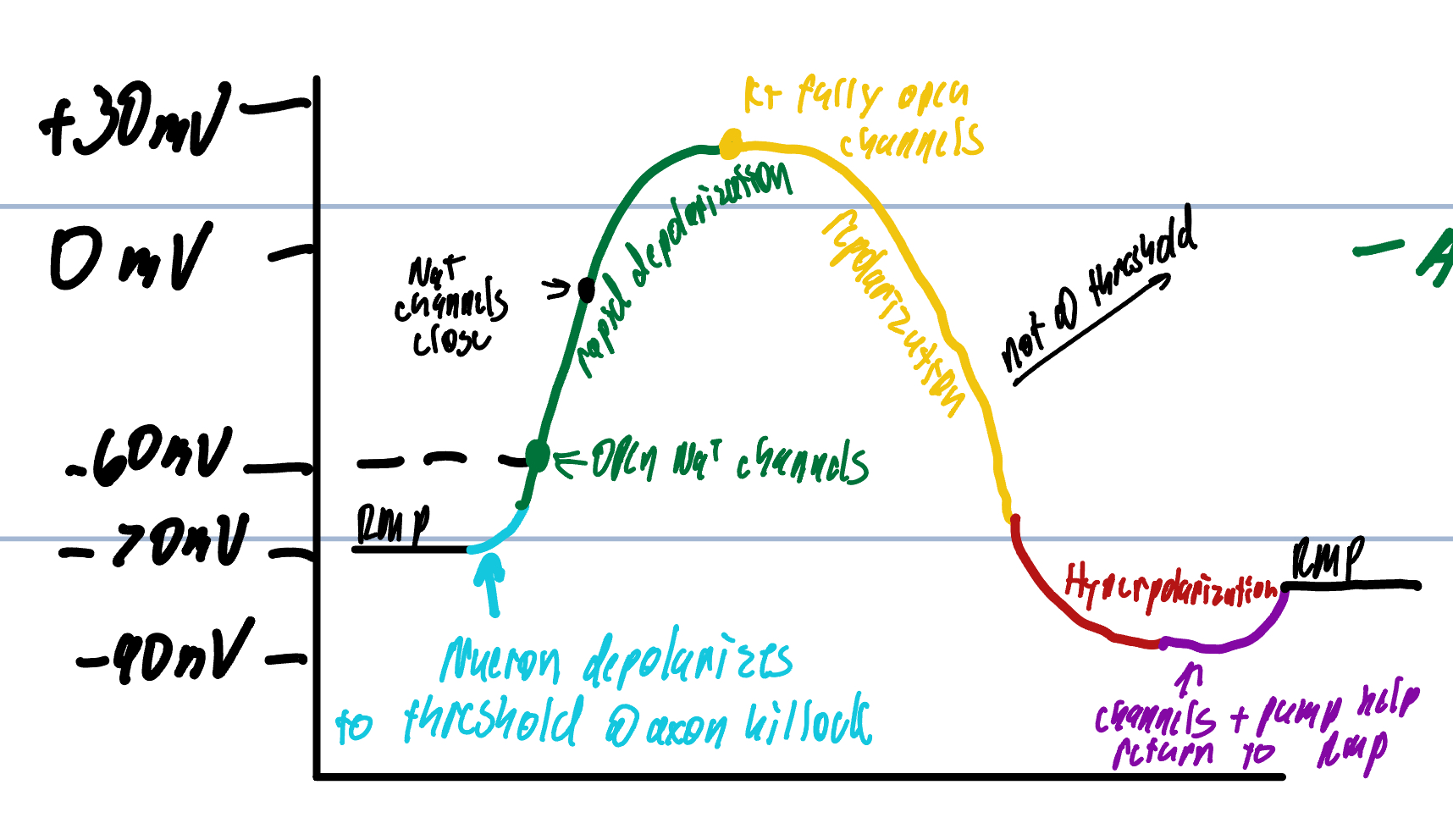
Absolute Refractory Period
Impossible to make another AP on a membrane segment
Threshold at +35 mv
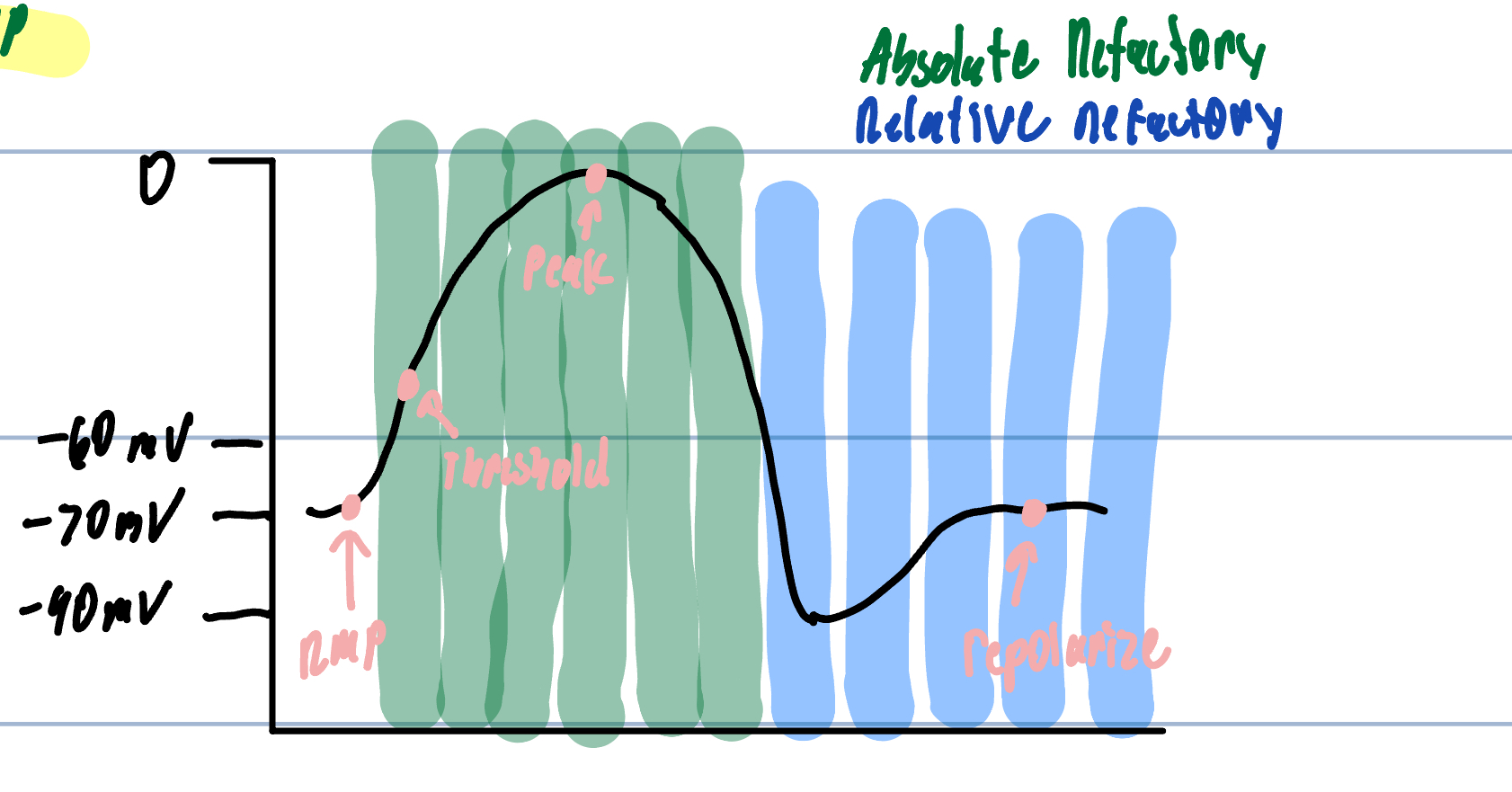
All or None Principle
threshold met= AP will occur
threshold not met = No AP
Irreversible
Relative Refractory Period
Difficult to make an AP membrane segment
Can generate another AP but requires STRONG stimulus
needs to reach threshold with K+ leaving but greater force of Na+ entering
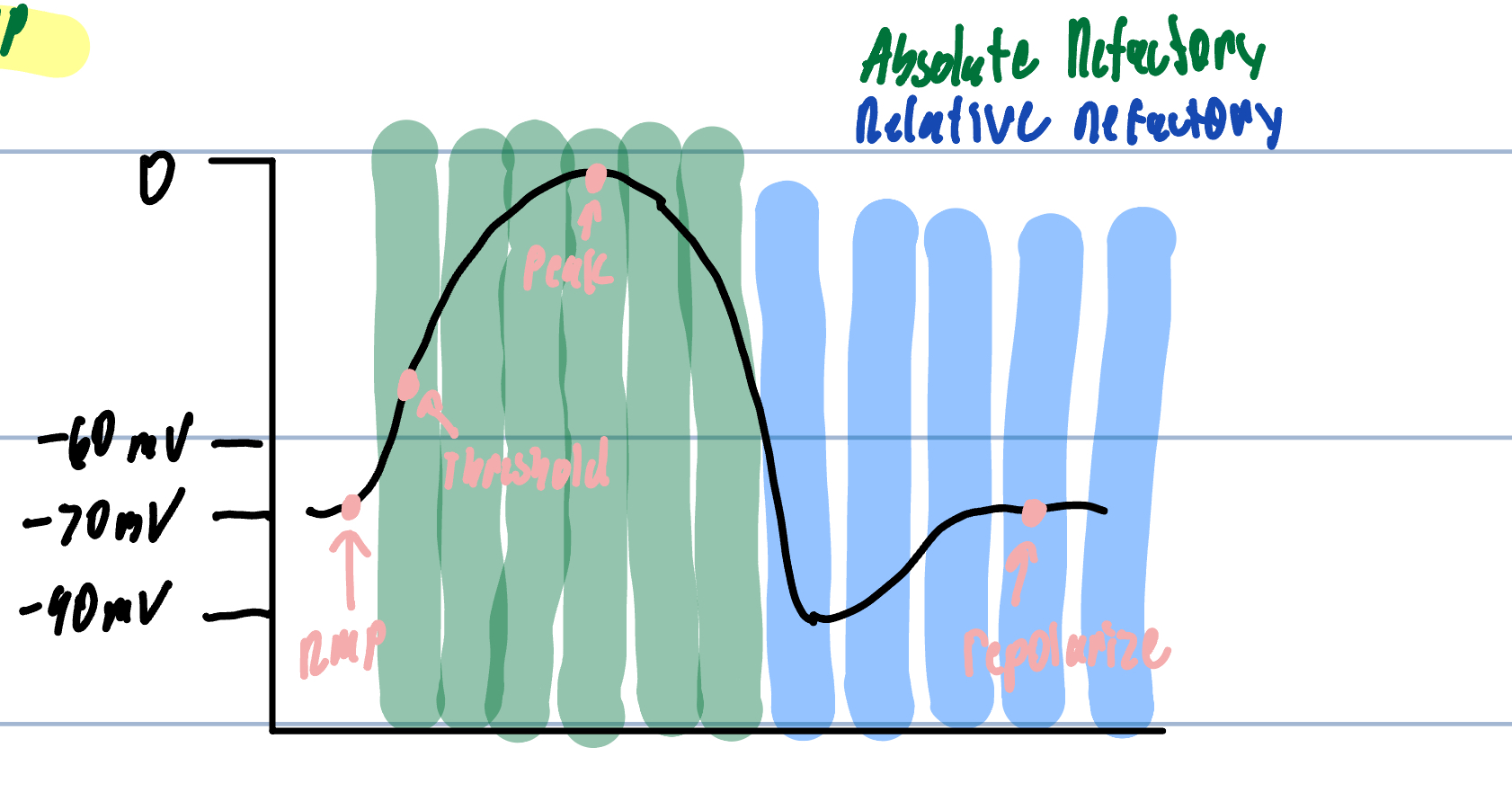
Sodium Voltage Gated Channels
RMP
Threshold
Peak
Repolarize
activation gate= outside of cell
inactivation gate= inside of cell
RMP voltage gate
-70 mv
Activation gate closed
inactivation gate opened

Threshold voltage gate
-60 mv
activation gate opened
inactivation gate opened
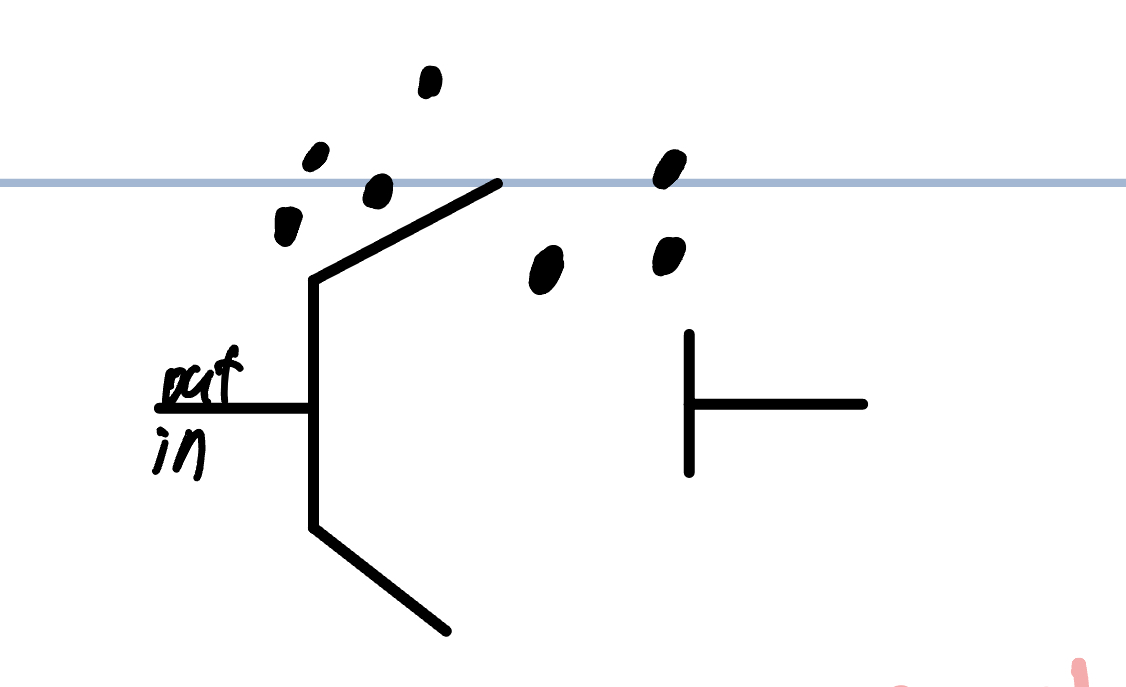
Peak voltage gate
+35 mv
activation gate opened
inactivation gate closed
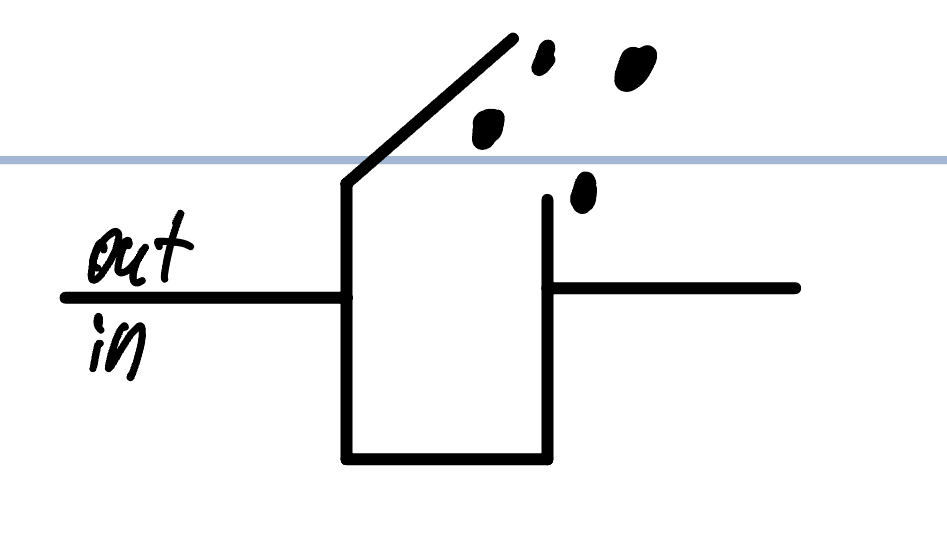
Repolarize voltage gate
-50 mv
activation gate reclosed
Inactivation gate reopens

Propagation
Continuous
Saltatory
Continuous Propagation
unmyelinated axons
AP spreads to the next segment
Saltatory Propagation
myelinated axons
Salt=Skip
Does not have to propagate every single segment of the axon
This allows for much faster APs
Axon Diameter
Large Diameter= faster propagation
Smaller diameter= slower propagation
Type A= largest + myelinated
Type B= medium+ myelinated
Type C= Smallest + unmyelinated